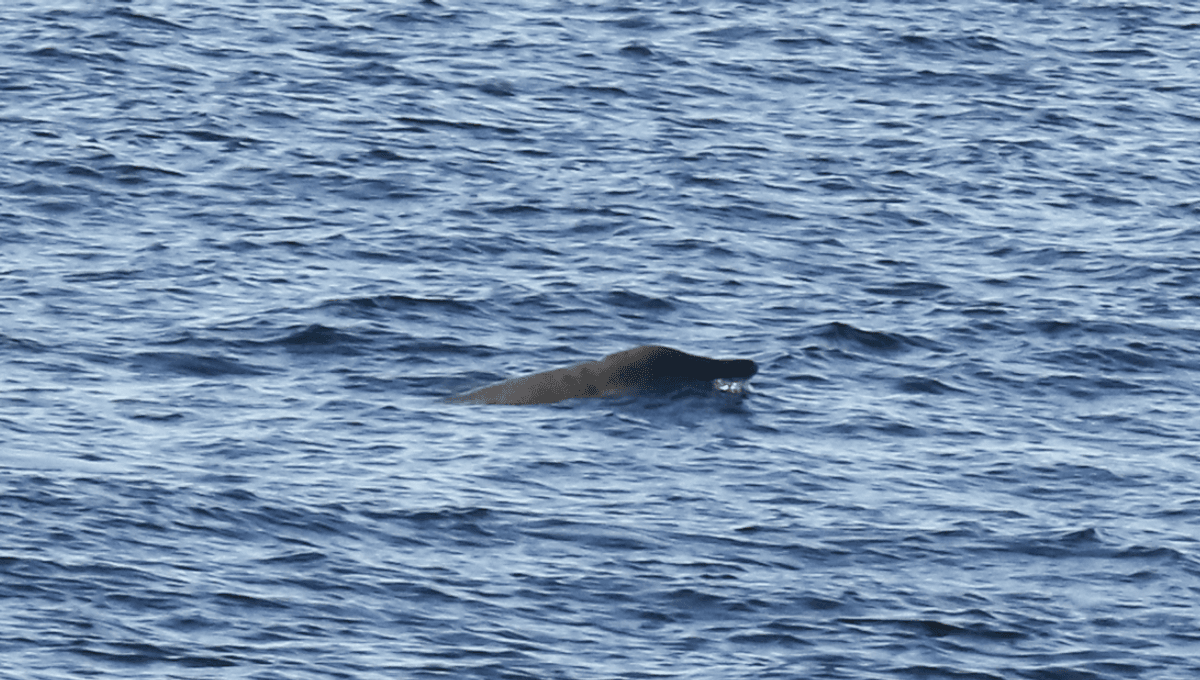
It’s been said that there are many benefits to being a marine biologist, but there is one insurmountable obstacle we humans simply can’t overcome: we are, in fact, primates. Terrestrial ones at that, meaning we don’t have the upper hand when it comes to tracking animals like whales in their natural environment.
For this reason, many whales are some of the world’s most elusive and least understood animals, from the spade-toothed whale with its weird “wisdom teeth”, to the beaked whales, considered to be some of the least understood mammals in the world.
This air of mystery (so demure) is due to their cryptic behavior, and the fact that they like to inhabit offshore waters. Unlike those orcas who have no problem swinging by to say high and sink a few yachts, beaked whales prefer to keep to themselves, but for science? That only makes it want to get to know them all the more.
Not only is learning about cryptic animals fascinating, but it can also be a pivotal step towards obtaining proper protections for animals that could be under threat. After all, you can’t put up a cordon without knowing where an animal spends its days.
For the beaked whale, we do know their days involve diving very deep into the ocean. In fact, they are the deepest diving mammals on record plunging to depths of around 3,000 meters below the ocean surface for hours at a time (something it’s thought they do to avoid predators). An impressive feat, but one that’s a bit problematic to study for us humans are our puny lungs.
So, how do you study cryptic animals like the beaked whale? That’s what a new study set out to tackle as it sought out to lift the lid on some of Brazil’s deepest diving animals.
“The motivation for this research arose from the need to expand knowledge on cetacean biodiversity in Brazilian waters, with particular attention to deep-diving species such as beaked whales,” said author Raphael Barbosa Machado in a statement.
There are 24 known species of beaked whales, but one thing that unites them is that they produce a kind of vocalization not seen in any other toothed whale. They use pulses of echolocation to get a handle on their environment, but frustratingly for us, they tend to stop making any sound when they get close to the surface. This means we’re limited to identifying them by sight alone, and it makes it harder to tell apart the sounds beaked whales are making from those of other whales.
This meant that capturing their vocalizations in a recording could be a huge leap forward in our understanding of these mysterious mammals, which is precisely what Machado and colleagues set out to do. They used hydrophones and autonomous recorders operating at a range of 192 to 384 kilohertz to conduct passive acoustic monitoring.
In the end they found themselves with nine audio recordings, as well as four visual confirmations of beaked whales. This was enough for them to marry up recordings with at least three different beaked whale species, an unprecedented glimpse into their unique language.
“This study provides the first documentation of acoustic parameters of beaked whales in Brazilian waters,” said Machado, “while also contributing new information on cetacean biodiversity in northern Brazil.”
Now that the team have been able to verify the potential of this kind of acoustic monitoring, they intend to carry it forward to unravel not only the mysteries of the world’s most mysterious mammals, but also the broader biodiversity of the western South Atlantic Ocean, a place (like many parts of the ocean) that’s still holding on to a few secrets.
“As the number of detections increases — particularly simultaneous visual and acoustic records — our ability to reliably associate specific acoustic signals with visually confirmed species will also improve,” said Machado. “Addressing these knowledge gaps is essential for informing public policies and guiding conservation and management efforts aimed at safeguarding these elusive species.”
The study is published in The Journal of the Acoustical Society of America.
Source Link: How Do You Study Cryptic Species? We’re Finally Lifting The Lid On The World’s Least Understood Mammals